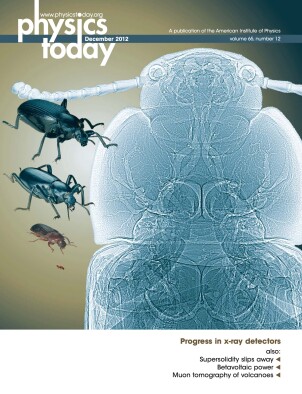Highly charged ions challenge QED
DOI: 10.1063/PT.3.1812
Highly charged ions challenge QED. Quantum electrodynamics (QED), the relativistic field theory describing interactions of light and charge, is justly celebrated for the astonishing accuracy with which it predicts, for example, the anomalous magnetic moment of the lone electron. But the reach of QED extends to substantially more complex systems. One class of objects amenable to experimental study and QED calculation includes helium-like ions with atomic number Z of about 25 and two orbiting electrons. In those three-body entities, the significant nuclear charge enhances the QED interactions. A recent experiment at the NIST Electron Beam Ion Trap facility by an international team led by Christopher Chantler (University of Melbourne, Australia) has made the most precise measurement to date for the energy of a specific atomic transition, called the w transition, in helium-like titanium 22Ti20+ and has obtained a value that disagrees with QED by three standard deviations. But the bigger surprise came when the group reviewed the published literature for w transitions in helium-like ions with Z between 16 and 36. Taken as a whole, the experimental data differed from theory by five standard deviations, and a least-squares fit through the data indicates that the discrepancies scale as Z3. Chantler and company note that the mismatches between experiment and theory potentially involve a variety of QED effects with various Z dependencies. Future experiments in the unexplored Z = 27–31 range, they say, could further systematize the discrepancies and guide theoretical work. (C. T. Chantler et al., Phys. Rev. Lett. 109, 153001, 2012.)
